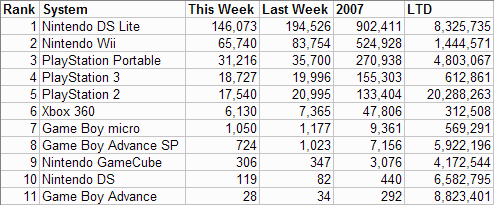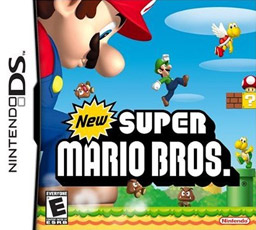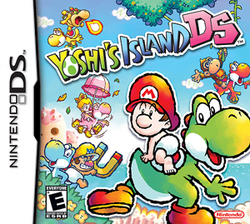Let's have another session with Blue Ocean Strategy:
Wrongly, Nintendo's strategy is summed up with making a few games to keep the Nintendo fans happy (the Marios and Zelda) while focusing on non-gamers. Actually, this is what Sony's strategy closest resembles where they make some games for the hardcore (like God of War) and games for casuals (Singstar or the rubber duckies). Blue Ocean Strategy is focused on building commonality, not segmentation.
We have been using only one term for noncustomers: just "non-gamers". It's time for that to change...
The graphic shown in Blue Ocean Strategy is the first tier on the edge of the first circle, with an outer circle for tier two and another outer circle for tier three. It looks like rings within rings with the traditional market being a small circle in the center.
So who qualifies as the first tier for video games? These are people who WANT to play but, for some reason, they can't. This is either because changes are occuring in real life which means they no longer have the time or they are finding games boring. Tier One are people who are about to leave gaming or have essentially left.
These are the lapsed gamers and casual gamers. Bored gamers are on the edge of the market. They are in danger of becoming lapsed. Casual gamers have the problem that games kept getting increasingly complex and time consuming.
All it takes is a leap of value and these 'soon-to-be' noncustomers become tomorrow's early adopters (such as the launch of Wii or DS Lite). These noncustomers are the easiest to 'tap'.
Using the DS as example for illustrating the tier system, there are several DS games that hit the nail on the head for casual/lapsed gamers.
Gamers who started with the 8-bit or 16-bit generation started with 2d Mario. Nintendo has not made a new 2d Mario game in fifteen years. New Super Mario Brothers shot up in sales because of these tier one noncustomers. Casual gamers love NSMB as well. When I saw NSMB at E3 2005, I ran out and bought a DS (such is the pull of 2d Mario).
This is an interesting example. Yoshi's Island DS sold more than it should last holiday with no major marketing or anything surrounding it. Much of the drive of people who bought Yoshi's Island DS were from those who loved the original on the SNES (released fifteen years ago).
Mario Kart DS was designed specifically against the SNES version of Super Mario Kart. Why did Nintendo choose the SNES version as the metric for the Mario Kart DS? The N64 and Gamecube Mario Karts sold extremely well so why use the SNES version? If Nintendo did not use the SNES version, it would have segmented the tier one noncustomers. Focusing on delivering a successor to the fifteen year old title, rather than the three year old Mario Kart DD, Nintendo was able to create demand for Mario Kart DS along the Tier One non-customers.
This tier consists of those the industry WANTS and has TRIED to get but these noncustomers refuse to join in. Who does this qualify for video games? Females. The games industry has been targeting females intensely but, aside from the Sims and Myst, females do not adopt gaming in mass. Two games were able to pull in the tier two noncustomers:
When Nintendogs was released, it suddenly boosted DS sales above the PSP. Obviously, Nintendogs unlocked a new demand. Pink DSes were bundled with Nintendogs, and they kept selling out everywhere. Nintendogs is one of the biggest selling games of recent time which shows how huge tier two is.
Animal Crossing DS, when released, created a sensation in Japan which triggered the DS sell-outs. Why didn't Animal Crossing do this for Gamecube? I have no idea. But no one can ignore the sales of Animal Crossing DS as it outsold traditional Japanese RPGs. The traditional Japanese rpg gaming audience is clearly outnumbered by tier two of noncustomers.
In video games, who were the people that the industry thought would NEVER buy their games? The old people. Everyone in the gaming industry thought old people would never be reached with video games, so they were never explored.
Brain Age is a good example of how Nintendo reached tier 3.
So what about the Wii? I believe Twilight Princess has reached Tier One (which explains its explosive sales in the West). Wii Sports is the big question. It has definately reached Tier Two but has it reached Tier Three? Either way, Wii Sports eruption can be seen in Japanese sales and in the Wii sales everywhere else (especially with all the multiple controller sales).
What unexplored noncustomers will Nintendo aim at next? I believe there is a huge potential for the business office (Wii appearing in offices? You better believe it. Wii Sports has pushed the system somewhat there but more software can push it further). Health games are also another major unexplored noncustomer base that Nintendo could aim at.













